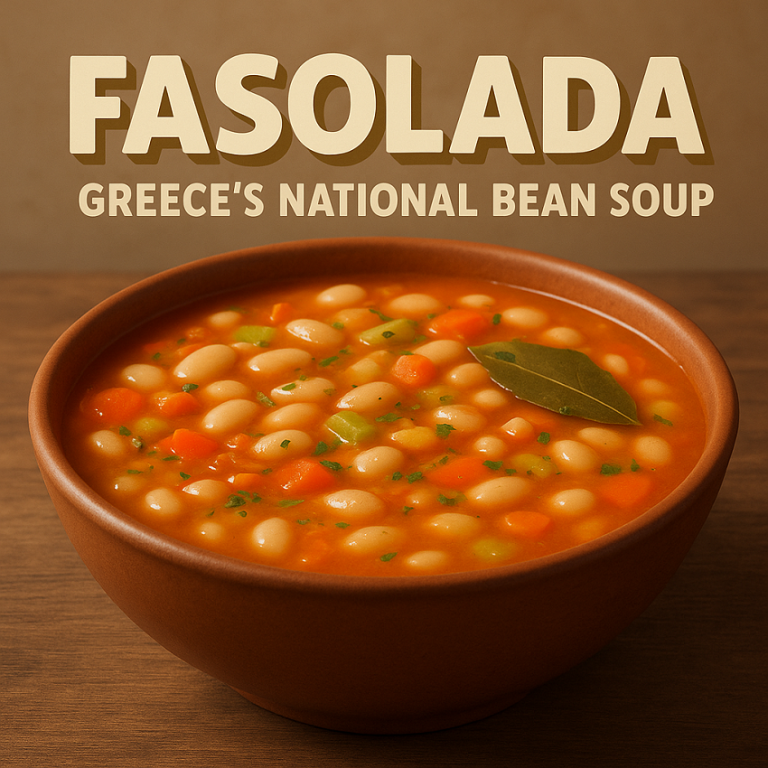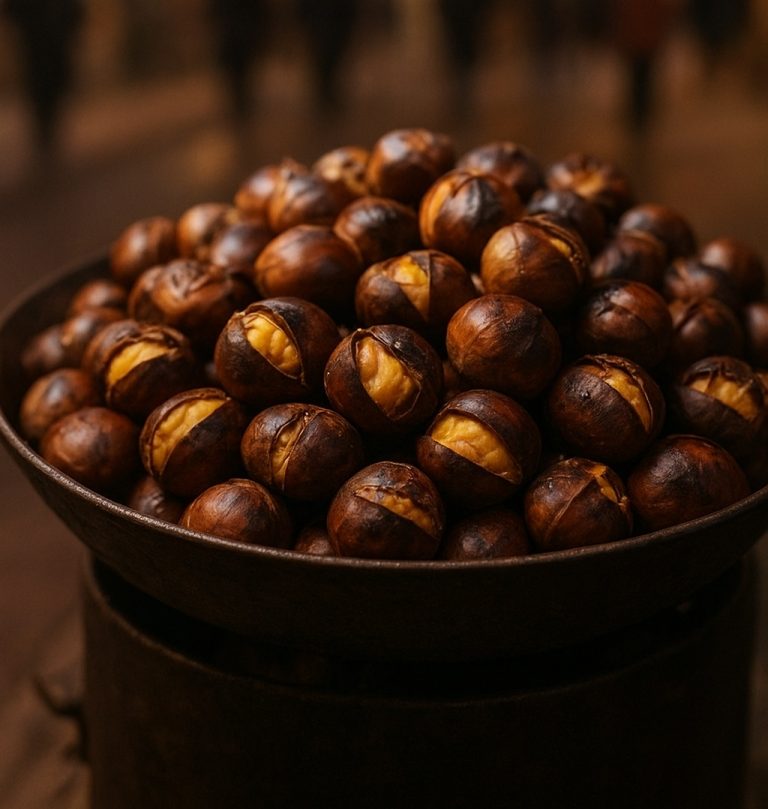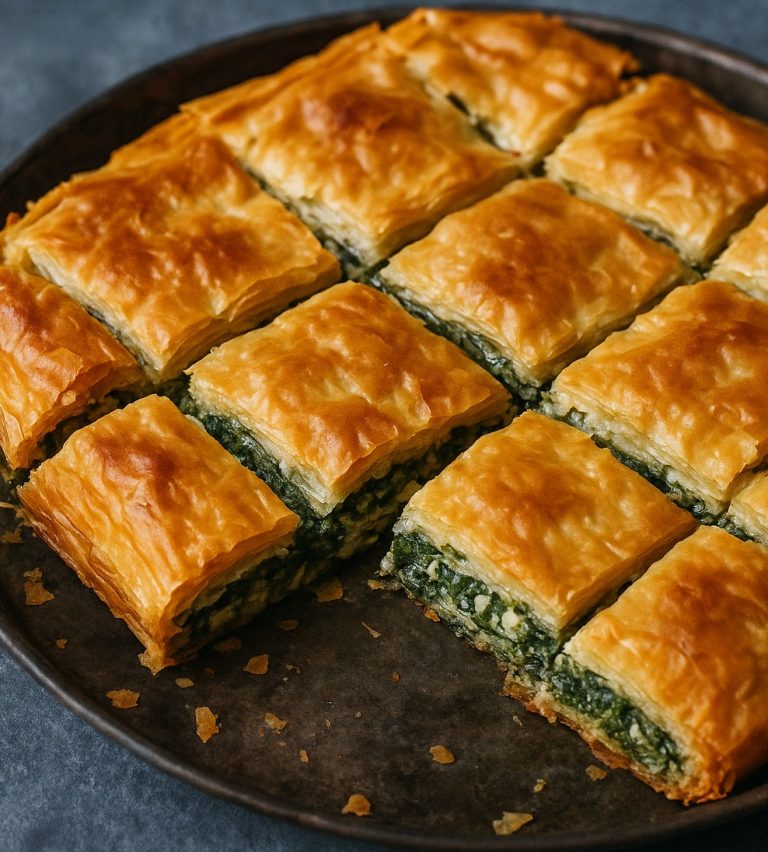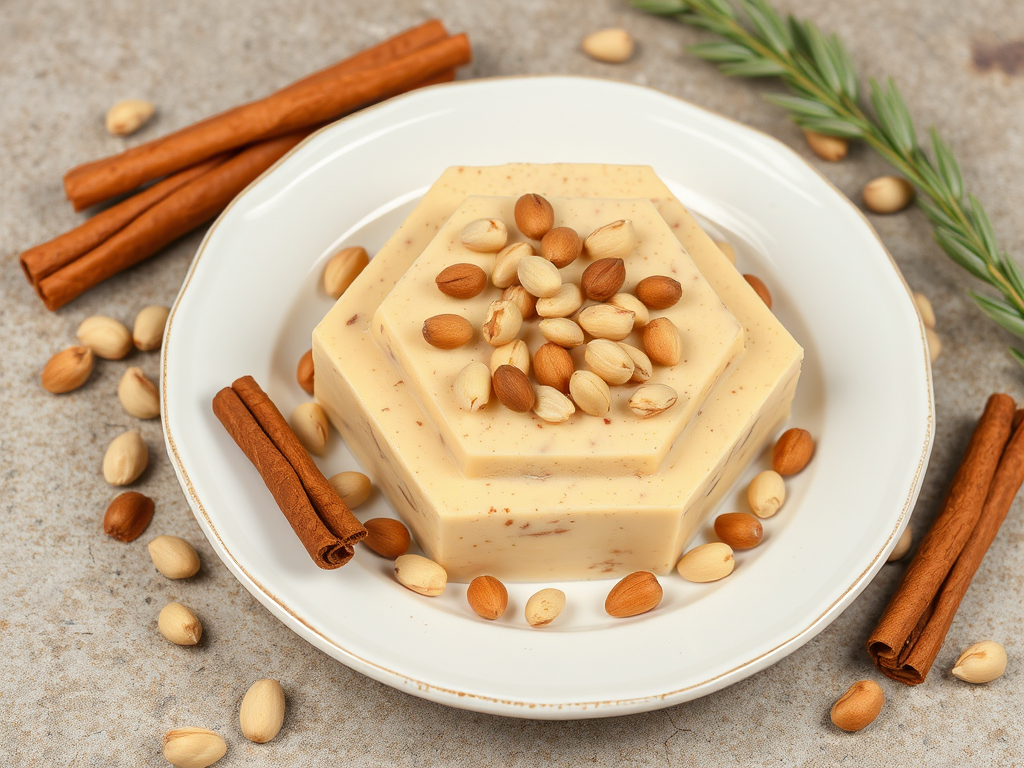
Greek pine nut halva, or “halvas,” is a cherished dessert that reflects the rich culinary traditions of Greece. This sweet treat combines the unique flavor of pine nuts with a simple yet delicious preparation, making it a favorite among locals and visitors alike. Its comforting texture and nutty taste evoke memories of family gatherings and festive celebrations.
What is Halva?
Halva is a term used to describe a variety of dense, sweet confections made from nuts, seeds, or grains. While halva can be found in many cultures, each region has its own variations and recipes. In Greece, halva is often made with tahini (sesame paste) or semolina, but pine nut halva stands out for its distinct ingredients and texture. Unlike its sesame counterpart, which is crumbly, pine nut halva has a chewy, rich consistency that melts in your mouth.
The History of Halva
Halva has a long and storied history that dates back centuries. Its origins are often traced to the Middle East, where it was made with various ingredients depending on local availability. Greek halva, particularly, has evolved over time, influenced by ancient Greek cuisine and the tastes of the Mediterranean. Pine nut halva is a testament to the versatility of this beloved sweet, showcasing the local ingredients that define Greek gastronomy.
Ingredients
Core Ingredients
- Pine Nuts: The star ingredient that offers a rich, buttery flavor. These nutrient-dense nuts are packed with healthy fats and provide a delightful crunch.
- Sugar: Essential for sweetness, sugar balances the natural flavors of the pine nuts.
- Water: Used to create a syrup with the sugar, allowing the mixture to bind together.
- Vanilla or Lemon Zest: Adds aromatic notes that elevate the overall flavor profile.
Optional Additions
- Cinnamon: A popular spice in Greek desserts, cinnamon enhances the halva with a warm, spicy kick.
- Honey: For a natural sweetness that complements the pine nuts.
- Chocolate: A modern twist that appeals to those with a sweet tooth, chocolate can be incorporated for added richness.
Preparation Method
Step-by-Step Guide
- Toast the Pine Nuts: Begin by lightly toasting the pine nuts in a skillet over medium heat. Stir frequently to prevent burning and to achieve a golden brown color, which enhances their flavor.
- Prepare the Syrup: In a saucepan, combine sugar and water. Heat the mixture over medium heat, stirring until the sugar dissolves. Continue cooking until the syrup reaches a soft ball stage (around 240°F or 115°C). This stage is crucial for achieving the right consistency in the halva.
- Combine Ingredients: Once the syrup is ready, remove it from heat. In a mixing bowl, combine the toasted pine nuts with the hot syrup. Stir quickly to ensure the nuts are evenly coated and the mixture is well combined.
- Set the Halva: Pour the mixture into a greased or lined baking dish. Press it down firmly to compact the halva, ensuring it holds its shape. Let it cool at room temperature for several hours or, ideally, overnight. This resting period allows the flavors to meld and the texture to firm up.
- Slice and Serve: After the halva has set, cut it into squares or bars. For an appealing presentation, you can sprinkle additional toasted pine nuts or a dash of cinnamon on top.
Nutritional Benefits
Pine nuts are not only delicious but also highly nutritious. They are an excellent source of healthy fats, particularly monounsaturated fats, which are beneficial for heart health. Additionally, pine nuts provide protein, fiber, and essential vitamins and minerals, including magnesium, zinc, and vitamin K. Greek pine nut halva can be a satisfying treat that offers both flavor and nourishment, making it a more wholesome dessert option.
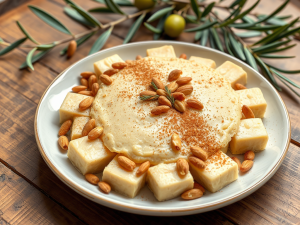
Enjoying Greek Pine Nut Halva
Greek pine nut halva can be enjoyed in various ways, making it a versatile addition to your dessert repertoire. It can be served as a sweet end to a meal, paired with coffee or tea, or even as a snack throughout the day. Its rich flavor makes it an excellent accompaniment to fresh fruits, yogurt, or a cheese platter.
For a decorative touch, consider garnishing with additional toasted pine nuts or a sprinkle of cinnamon. You can also experiment with pairing it with a drizzle of honey or a dollop of Greek yogurt for a delightful contrast in flavors and textures.
Cultural Significance
In Greek culture, food is often a central part of celebrations and gatherings. Halva, including pine nut variations, is frequently served during religious holidays, festive occasions, and family celebrations. Its preparation can be a communal activity, bringing family and friends together in the kitchen. Sharing halva is a way to connect with heritage and create lasting memories.
Conclusion
Greek pine nut halva is a delightful dessert that combines simplicity with rich flavors. Its unique taste, easy preparation, and cultural significance make it a wonderful addition to any table. Whether enjoyed at a family gathering or shared with friends, this traditional sweet is sure to please anyone with a love for nutty confections. Indulging in a piece of pine nut halva is not just a treat for the palate; it’s an invitation to savor the warmth and hospitality of Greek culture.
